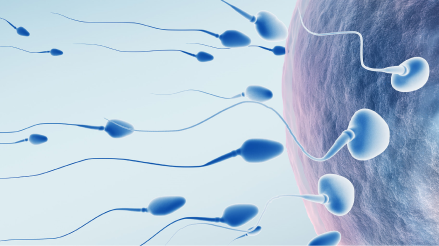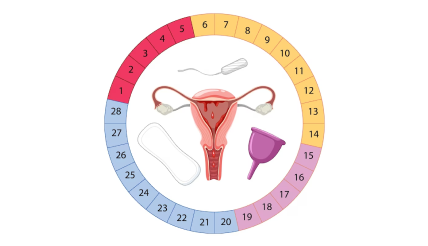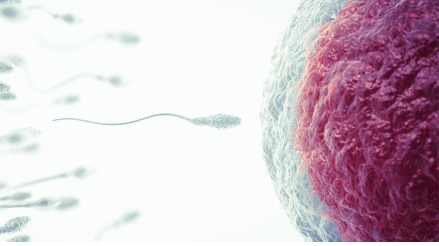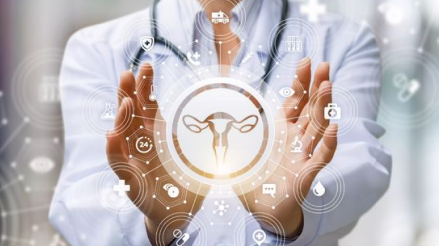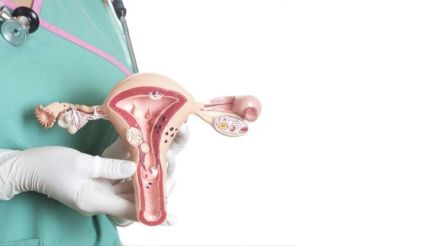You may also like…
Getting Pregnant : A Healthy Uterus
Why do you need a healthy uterus to be fertile?
Welcome to the enchanting realm of the Womb Diaries, where incredible journeys begin and little miracles come to life! We may not remember our time inside our mother's womb, but let's dive into the secrets of a healthy uterus that can host a pregnancy fit for the stars!
Think of the uterus as the ultimate vacation spot for embryos, a cozy and nurturing haven where they can settle in for their incredible transformation into tiny humans.
So, what makes a uterus the crème de la crème of womb real estate? Let's unravel its magnificent qualities. First, it's all about the thickness, baby! A healthy uterus boasts a nice, plump endometrial lining measuring around 7 to 8 mm.
But that's not all! A receptive endometrium is the secret ingredient. The lining of the uterus becomes a cozy nest, ready to nourish and support the tiny life growing within.
Now, let's talk about some potential troublemakers. Uterine fibroids, adhesions, scar tissue, and endometriosis—these are the party crashers we want to avoid.
And here's a fun fact: an active lifestyle is the key to a happy uterus! Picture the uterus as a vibrant dance floor, pulsating with good blood flow and strong uterine muscles. Regular physical activity keeps the blood flowing and strengthens the uterine muscles that will support the uterus throughout the entire pregnancy.
SO, all that is fine but what are the problems that may cause uterine problems which may be contributing to a couple’s infertility?
Common Uterine Problems women facing infertility problems may face:
Welcome to the Marvelous Uterine Chronicles, where we uncover some fascinating tales about the challenges that can arise on the path to a successful pregnancy!
Let's start with a curious condition called Hypoplasia, where the uterus decides to be a bit smaller than usual or takes on an unusual shape. While this condition may lead to habitual abortion (a rather unfortunate term for repeated miscarriages), it's important to remember that it more often affects the ability to maintain a pregnancy rather than the ability to conceive. So, chin up, because your fertility might still be in full bloom!
Now, brace yourself for a journey into the world of uterine malformations. Picture this: the uterus decides to break the mold and come in a shape that's a bit different from the usual. These malformations can sometimes cause habitual abortion, as the uterus may struggle to provide a stable environment for pregnancy.
Now, let's explore the intriguing Asherman syndrome. Imagine the endometrial cavity—the cozy inner space of the uterus—getting a bit crowded with adhesions due to infections, curettage mishaps, or even packing after childbirth. These adhesions can cause all sorts of trouble, like Agglutination (think of sticky situations!) and thick adhesions. But worry not, for there are different degrees of severity, from minimal adhesions that involve less than 25% of the uterine cavity to more extensive adhesions that impact a larger portion of the uterus. Thankfully, medical interventions can help address these adhesions and restore harmony within the uterus.
Ah, fibroids, the notorious disruptors of the fertility world! Picture them as little rebels who block fallopian tubes, distort the passage of sperm, and even hinder the implantation process. But here's the exciting part: studies have shown that removing these fibroids through myomectomy can actually lead to a pregnancy rate of 30% to 40%! It's like a ray of hope shining through. However, it's worth noting that infertility can also be influenced by other factors, not just the presence of fibroids.
Now, let's wrap up our journey by exploring the delicate balance between the glandular and stromal growth in the endometrium. Sometimes, these two elements can become a bit out of sync, making the endometrium unreceptive to the hormonal cues from the ovaries. This can prevent the implantation process, like a missed connection between two lovers. But fear not, as medical advancements and treatments can help synchronize these elements and create a more receptive environment for pregnancy.
So, dear woman, embrace the wonders of your unique uterus and the challenges it may present. Remember, there are solutions and interventions available to overcome these hurdles. Stay positive, stay curious, and trust in the incredible resilience of your body. May your journey to motherhood be filled with joy, love, and a touch of magic!
Powered by Froala Editor


